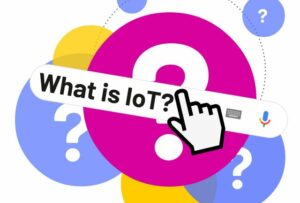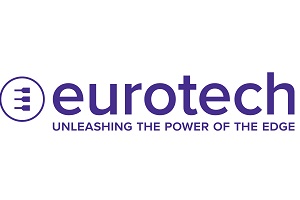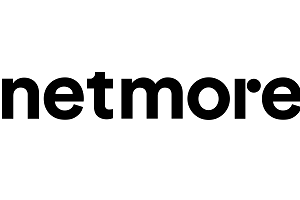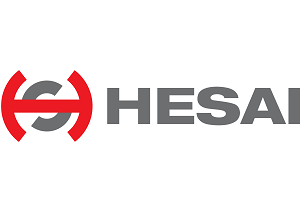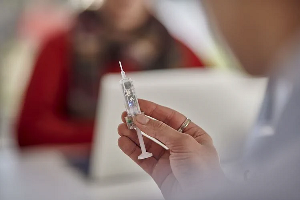It is not news that the Internet of Things is here and is revolutionising every sector of modern life as we know it, from healthcare, smart homes and finance through to the way cities and transport infrastructures and much more. As its ubiquity increases, inevitably lesser-known use-cases are emerging. All hail the arrival of ‘Smart Textiles’.
What are Smart Textiles?
Smart textiles are fabrics or materials that are embedded with electronic components, enabling them to sense, process and respond to both their wearer and their wearer’s environment. These electronics are incorporated into the fibre itself, are designed to be flexible and to support the fabric’s ‘breathability’ and comfort.
The technology built into these textiles includes sensors, actuators, microcontrollers and conductive materials. This integration enables them to interact with the surrounding environment, collect data and transmit information to other devices through wireless or wired connections.
Example Smart Textile use-cases:
- Smart Clothing: Smart textiles have paved the way for innovative clothing designs that enhance comfort, safety and functionality. Most typically seen in fitness apparel, these garments are embedded with biometric sensors that can monitor vital signs, such as heart rate and body temperature, providing valuable data for athletes and healthcare professionals.
- Wearable Healthcare Devices: Smart textiles have revolutionised the healthcare industry by enabling the development of wearable medical devices. For instance, smart bandages equipped with sensors can monitor wound healing, detect infections and alert healthcare providers in real-time, improving patient care and reducing hospital stays.
- Safety and Protection: Smart textiles are increasingly being used in safety applications. Certain smart textiles can detect and react to potential hazards. For instance, fire-resistant textiles can automatically trigger an alarm or deploy a fire suppressant when exposed to high temperatures, minimising the risk of injury or damage. Similarly, workers in industrial settings can wear smart textiles that detect dangerous chemicals or hazardous conditions, providing early warnings and preventing accidents.
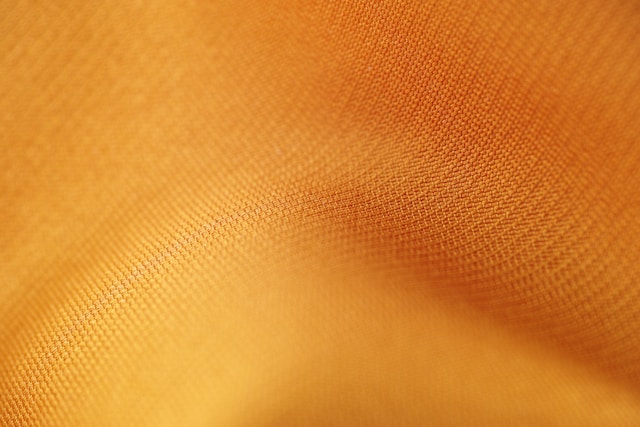

Smart textiles on the wider IoT stage
Smart textiles in IoT are seeing an increasing amount of deployments, one such example is in the home. Smart textiles are being incorporated into home environments, to enable automated control of lighting, temperature and security systems. For instance, curtains embedded with sensors can adjust themselves according to lighting conditions, optimising energy usage.
In the automotive industry, smart textiles are being incorporated into vehicle interiors, enabling enhanced comfort and safety. Car seats coverings are being embedded with sensors that can adjust to the occupant’s body posture and monitor fatigue levels, reducing the risk of accidents.
In the mHealth sector, specially designed clothing is being developed for babies and the elderly, seen as the more vulnerable demographics in society. With either limited ability to communicate or limited physically and living alone, these garments can monitor movements, falls and general health meaning that incident prevention and detection is hugely increased.
The pros of smart textiles in IoT
- Enhanced functionality: Smart textiles in IoT offer a seamless integration of technology into everyday objects, allowing for enhanced functionality and convenience.
- Improved healthcare: The integration of smart textiles in IoT has revolutionised healthcare, enabling remote patient monitoring, early detection of health issues, and personalised treatment.
- Sustainability: Smart textiles in IoT can contribute to sustainability efforts by enabling energy harvesting, reducing waste and facilitating recycling.
- Customisation and personalisation: Smart textiles offer opportunities for customisation, allowing users to adapt their garments to individual preferences and needs.
- Integration with IoT: By seamlessly integrating with IoT devices, smart textiles can create interconnected ecosystems that enhance daily living experiences.
- Innovation and creativity: The combination of textiles and technology opens opportunities for innovation and creativity. Designers and researchers can explore new materials, functionalities and applications, leading to breakthroughs in various industries.
The cons of smart textiles in IoT
- Cost and complexity: Smart textiles can be more expensive to produce compared to traditional fabrics due to the integration of electronic components and sensors. Plus, the integration of technology into textiles adds another layer to the production process, one that requires specialised skills, expertise and increased production time.
- Power Consumption: The use of electronic components in smart textiles can increase power consumption, requiring frequent recharging or battery replacements.
- Durability: Ensuring the durability of smart textiles is a challenge as electronic components may be susceptible to wear and tear or damage during laundering.
- Privacy and Security: The collection and transmission of personal data through smart textiles raise concerns about privacy and security, necessitating robust encryption and data protection measures.
- Maintenance: Smart textiles require careful maintenance and cleaning to ensure the longevity and functionality of the embedded electronic components.
Coupling the challenges with the potential of Smart Textiles
Smart textiles have opened new realms of possibilities, in the IoT landscape. From wearable health monitoring to climate-responsive clothing and gesture-controlled apparel, these textiles offer enhanced functionality and customisation.
While the integration of smart textiles in IoT brings numerous benefits, challenges related to cost, durability, and privacy need to be addressed. However, with continuous advancements in technology, smart textiles in IoT have the potential to transform various industries and improve our daily lives.
- SEO Powered Content & PR Distribution. Get Amplified Today.
- PlatoData.Network Vertical Generative Ai. Empower Yourself. Access Here.
- PlatoAiStream. Web3 Intelligence. Knowledge Amplified. Access Here.
- PlatoESG. Automotive / EVs, Carbon, CleanTech, Energy, Environment, Solar, Waste Management. Access Here.
- BlockOffsets. Modernizing Environmental Offset Ownership. Access Here.
- Source: https://www.iot-now.com/2023/07/28/133599-how-and-why-smart-textiles-became-a-thing/
- :has
- :is
- :not
- a
- ability
- About
- accidents
- According
- adapt
- Adds
- advancements
- alarm
- Alert
- All
- Allowing
- alone
- amount
- an
- and
- Another
- apparel
- applications
- ARE
- arrival
- AS
- athletes
- Automated
- automatically
- battery
- BE
- became
- being
- benefits
- biometric
- body
- both
- breakthroughs
- Brings
- built
- by
- CAN
- car
- care
- careful
- certain
- challenge
- challenges
- chemicals
- Cities
- Cleaning
- Clothing
- collect
- combination
- comfort
- communicate
- compared
- complexity
- components
- Concerns
- conditions
- Connections
- Cons
- consumption
- continuous
- contribute
- control
- convenience
- Cost
- create
- creativity
- daily
- damage
- Dangerous
- data
- data protection
- Demographics
- deploy
- deployments
- designed
- designers
- designs
- Detection
- developed
- Development
- Devices
- due
- durability
- during
- Early
- Ecosystems
- efforts
- either
- Elderly
- Electronic
- Electronics
- embedded
- emerging
- enable
- enables
- enabling
- encryption
- energy
- enhance
- enhanced
- ensure
- ensuring
- Environment
- environments
- equipped
- Europa
- Every
- everyday
- example
- expensive
- Experiences
- expertise
- explore
- exposed
- fabrics
- facilitating
- Falls
- fatigue
- finance
- Fire
- fitness
- flexible
- For
- frequent
- from
- functionalities
- functionality
- garments
- General
- Harvesting
- Have
- healing
- Health
- healthcare
- Heart
- here
- High
- Home
- Homes
- Hospital
- How
- However
- HTTPS
- Hugely
- improve
- improving
- in
- incident
- includes
- Incorporated
- Increase
- increased
- Increases
- increasing
- increasingly
- individual
- industries
- industry
- inevitably
- Infections
- information
- infrastructures
- innovative
- instance
- Integrating
- integration
- interact
- interconnected
- Internet
- internet of things
- into
- Investopedia
- iot
- iot devices
- issues
- IT
- ITS
- itself
- jpg
- Know
- Laundering
- layer
- leading
- lesser-known
- levels
- Life
- Lighting
- Limited
- Lives
- living
- longevity
- maintenance
- materials
- max-width
- May..
- McKinsey
- meaning
- measures
- medical
- medical devices
- mHealth
- Modern
- Monitor
- monitoring
- more
- most
- movements
- much
- Need
- needs
- New
- news
- now
- numerous
- numerous benefits
- objects
- of
- offer
- on
- ONE
- opened
- opens
- opportunities
- or
- Orange
- Other
- our
- patient
- patient care
- personal
- Personalised
- Physically
- plato
- Plato Data Intelligence
- PlatoData
- plus
- possibilities
- potential
- power
- preferences
- preventing
- Prevention
- privacy
- Privacy and Security
- process
- produce
- Production
- professionals
- PROS
- protection
- providers
- providing
- raise
- Rate
- React
- real-time
- recycling
- reducing
- related
- remote
- Reports
- require
- requires
- researchers
- Respond
- revolutionising
- Risk
- robust
- Safety
- seamless
- seamlessly
- sector
- security
- security systems
- seeing
- seen
- sense
- sensors
- settings
- Signs
- Similarly
- skills
- smart
- Society
- specialised
- specially
- such
- support
- Surrounding
- susceptible
- Sustainability
- Systems
- Technology
- textiles
- that
- The
- their
- Them
- themselves
- These
- thing
- things
- this
- Through
- time
- to
- traditional
- Transform
- transmit
- transport
- treatment
- trigger
- typically
- Usage
- use
- use-cases
- used
- users
- Valuable
- various
- vehicle
- vital
- Vulnerable
- Waste
- Way..
- we
- wearable
- when
- why
- wider
- wireless
- with
- workers
- wound healing
- zephyrnet



